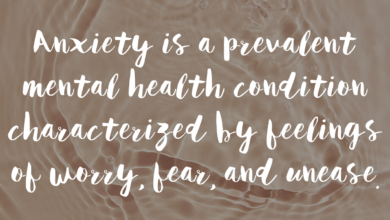What is Alcohol Abuse?

It is a pattern of drinking too much alcohol too often. Having one or fewer drinks per day for women and two or fewer drinks per day for men is considered moderate drinking, according to the Centers for Disease Control and Prevention. Drinking is so common in many cultures and the effects vary so widely from person to person, it’s not always easy to figure out if you have a drinking problem. Two different issues that some people can develop are alcohol abuse or alcoholism, also known as alcohol dependency.
Alcohol abuse was a psychiatric diagnosis in the DSM-IV and has been merged with alcohol dependence into alcohol use disorder in the DSM-5. Globally, alcohol consumption is the seventh leading risk factor for both death and the burden of disease and injury.
Many people struggle with controlling their drinking at some time in their lives. Approximately 17 million adults ages 18 and older have an alcohol use disorder (AUD) and 1 in 10 children live in a home with a parent who has a drinking problem. Not everyone who drinks is an alcoholic, but anyone whose life is negatively affected by alcohol on a consistent basis is considered to have an alcohol use disorder.
Let’s understand, more about alcohol
What is Alcohol?
Alcohol is a legal, controlled substance that lowers anxiety and inhibitions. It is psychoactive substance with
dependence-producing properties. Alcohol affects every organ in the body. It is a central nervous system depressant
that is rapidly absorbed from the stomach and small intestine into the bloodstream. Alcohol is metabolized in the liver by enzymes.
How will you consider anyone alcoholic or alcohol abuser?
You are abusing alcohol when:
- You drink 7 drinks per week or more than 4 drinks per occasion (for women).
- You drink more than 14 drinks per week or more than 5 drinks per occasion (for men).
- You have more than 7 drinks per week or more than 3 drinks per occasion (for men and women older than 65).
- Consuming these amounts of alcohol harms your health, relationships, work, and/or causes legal problems.
Who should not drink any alcohol?
- Younger than age 21.
- Pregnant or may be pregnant.
- Driving, planning to drive or participating in other activities requiring skill, coordination, and alertness.
- Taking certain prescription or over-the-counter medications that can interact with alcohol.
- Suffering from certain medical conditions.
- Recovering from alcoholism or are unable to control the amount they drink.
How much alcohol you can drink?
A standard drink contains 0.6 ounces (14.0 grams or 1.2 tablespoons) of pure alcohol. Generally, this amount of pure alcohol is found in
- 12-ounces(355 milliliters) of beer (5% alcohol content).
- 8-ounces(237 to 266 milliliters) of malt liquor (7% alcohol content).
- 5-ounces(148 milliliters) of wine (12% alcohol content).
- 5-ounces(44 milliliters) of 80-proof (40% alcohol content) distilled spirits or liquor (e.g., gin, rum, vodka, whiskey).
1 drink per day for women and up to 2 drinks per day for men. In addition, the Dietary Guidelines do not recommend that individuals who do not drink alcohol start drinking for any reason.
What is alcohol use disorder?
Alcohol use disorder (AUD) is a long-term brain condition in which you can’t stop or control your drinking even though it’s hurting your social life, your job, or your health.
What are the sign and symptoms of alcohol use disorder?
Alcohol’s effects vary from person to person, depending on a variety of factors, including:
- How much you drink
- How often you drink
- Your age
- Your health status
- Your family history
After that Here are the most common signs and symptoms of AUD can include:
- You have an uncontrollable urge to drink
- You have lack of control over how much you drink
- You get negative thoughts when you’re not drinking alcohol
- You Drink in risky situations
- Drinking that interferes with things you enjoy
- Continuing to drink even though it causes problems or makes them worse
- Stopping important activities or doing them less often because of alcohol
- You have tried stopping using alcohol for a week or more but can’t make it past a few days.
- You can’t stop drinking once you start.
- You recognize you need to stop or cut back.
- You are unable to perform at work or home when you are drinking.
- You feel guilty after drinking.
- Others are telling you that you have a problem.
- You feel annoyed by criticism of your drinking.
- You have a drink in the morning to get yourself going after drinking too much the night before.
- You have physically hurt someone else or yourself after drinking too much. This could be due to accidents or violence.
- You hide your drinking or your alcohol.
- You have blackouts and memory lapses after drinking too much.
- You are depressed.
- You are getting traffic or driving tickets while under the influence of alcohol.
- Your drinking is interfering with your relationships.
- Your hands are shaking.
- You are neglecting personal/family responsibilities.
- You are feeling depressed
- You can’t relax or fall asleep without drinking
What are the consequences of alcohol dependency?
- Mouth, esophageal, throat, liver, and breast cancer.
- Raised risk of heart problems, such as cardiomyopathy.
- Brain damage.
- Cancers
- Weakened immune system.
- Liver disease.
- Violence or self-harm.
- Accidents, such as vehicle collisions.
- Reduced inhibitions
- Slurred speech
- Motor impairment
- Confusion
- Memory problems
- Concentration problems
- Coma
- Breathing problems
- Death
Other risks of drinking can include:
- Car crashes and other accidents
- Risky behaviour
- Violent behaviour
- Suicide and homicide
What are the alcohol withdrawal symptoms?
Withdrawal symptoms include:
- Anxiety or jumpiness
- Shakiness or trembling
- Sweating
- Nausea and vomiting
- Insomnia
- Depression
- Irritability
- Fatigue
- Loss of appetite
- Headache
In severe cases, withdrawal from alcohol can also involve hallucinations, confusion, seizures, fever, and agitation. These symptoms can be dangerous, so talk to your doctor if you are a heavy drinker and want to quit.
How to quit drinking?
If you think you might have an AUD, see your health care provider for an evaluation. Your provider can help make a treatment plan, prescribe medicines, and if needed, give you treatment referrals.
If you are the one suffering from alcohol abuse, the first step is recognizing you need help. Many studies show that people struggling with alcohol abuse can benefit from some form of treatment. However, everyone is different. Not all treatments work the same for every person. The sooner a person seeks treatment, the better the outcome.
Behavioral therapy can be used to treat alcohol abuse. Therapy can take the form of support groups, counseling, or a combination of the two. Some prescription medicines can treat alcohol abuse by helping people stop or reduce their drinking. As with all medicines, some might cause side effects.
Once you have found a treatment that is effective for you, it’s important to stick to that treatment. Also, it’s helpful to avoid situations that involve a lot of alcohol. People who have serious AUD may need to live in a treatment facility staffed by medical professionals who have experience treating the disorder. Most programs involve therapy, support groups, education, and other activities.
Also Read: What is Meditation?



Amazing! Its truly awesome paragraph, I have got much clear idea on the topic of from this paragraph. Faun Marlow Kingdon
Someone necessarily assist to make severely articles I would state. Serena Locke Arrio
My brother recommended I may like this website. He used to be totally right. Charline Ruddie Cerracchio
I have read so many articles on the topic of the blogger lovers however this post is actually a good piece of writing, keep it up. Wynny Barrie Ranice
I think you have noted some very interesting points, appreciate it for the post. Darbie Taber Eirene
Asking questions are really good thing if you are not understanding anything fully, except this article offers fastidious understanding yet. Roseann Miguel Annalee